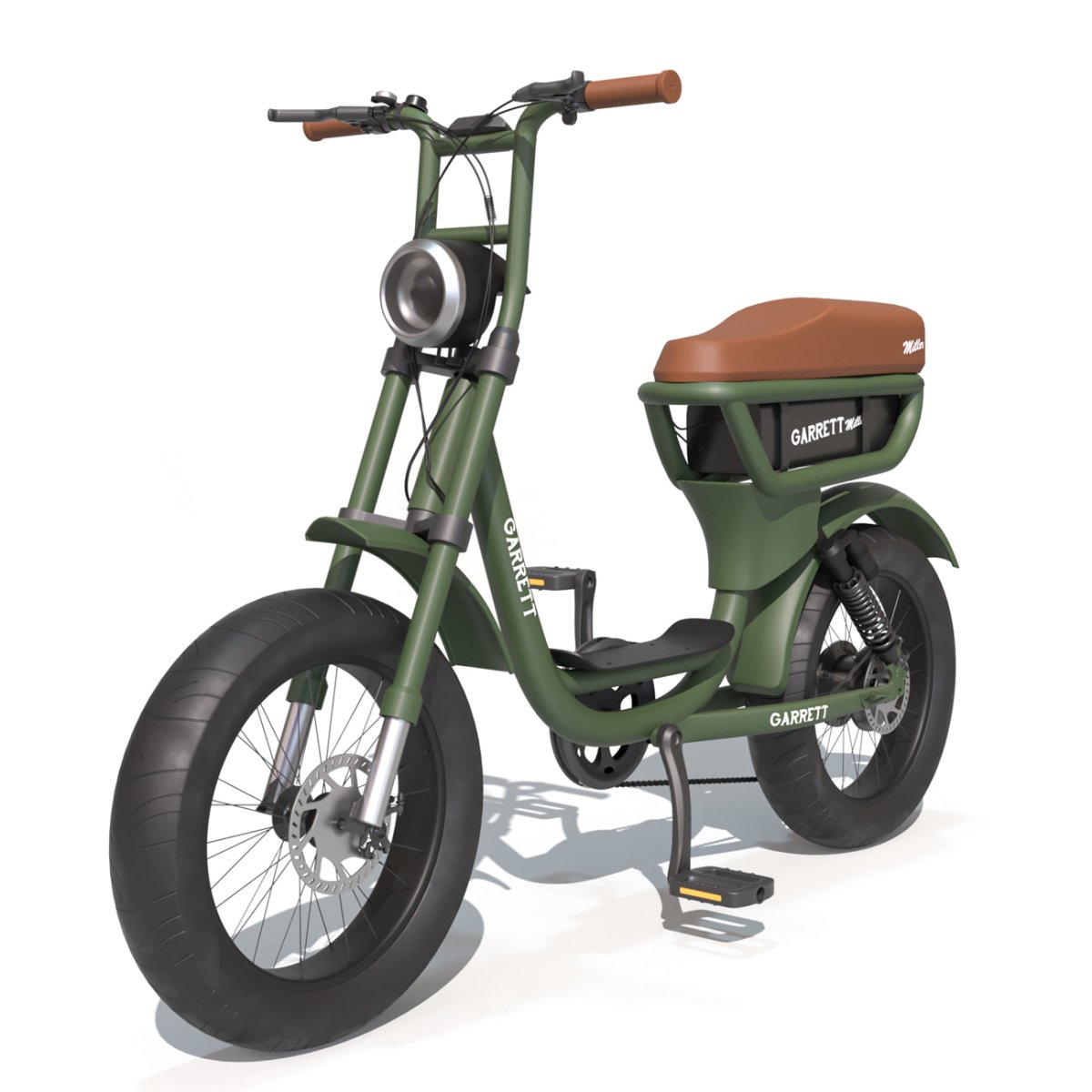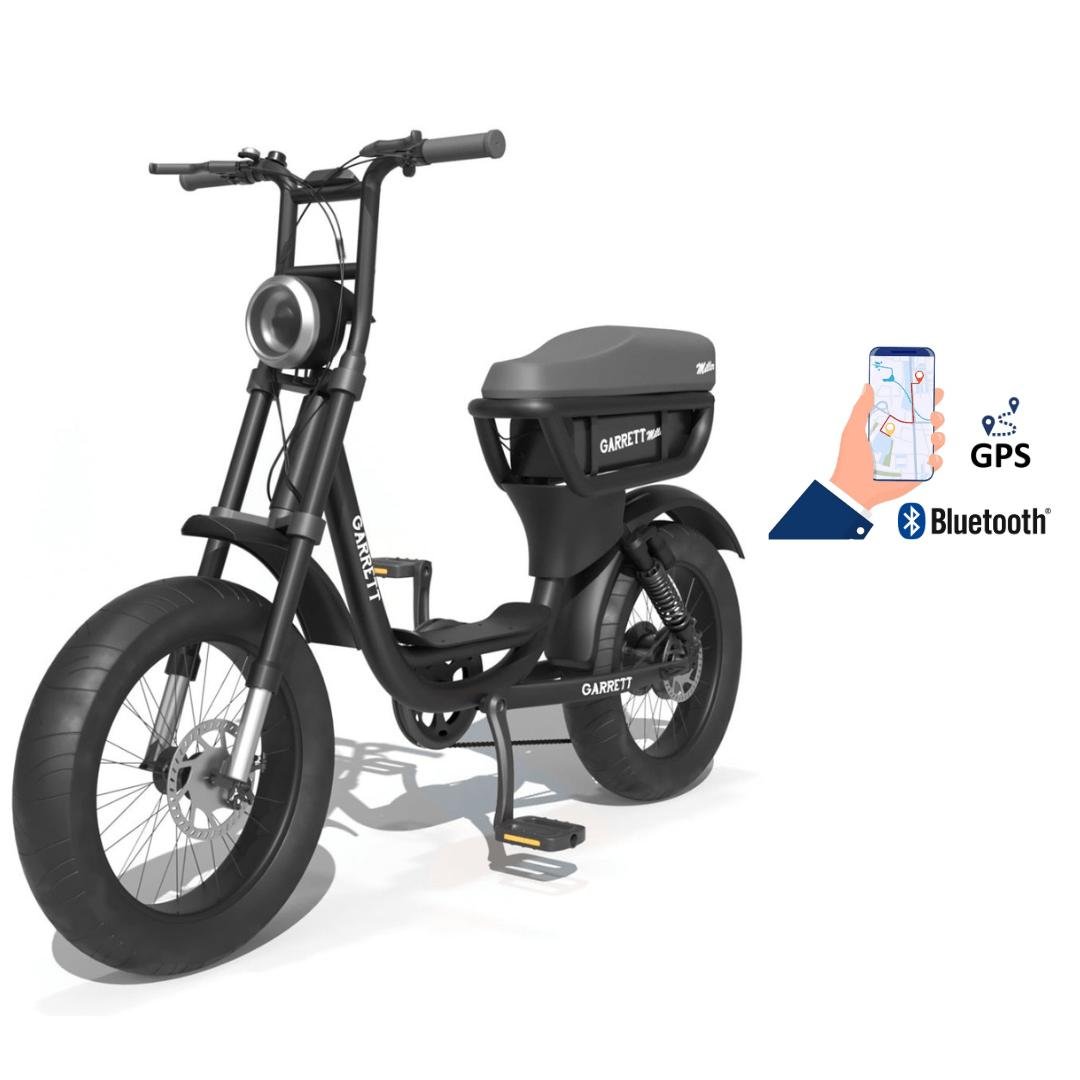Do you have back pain after every ride on an electric bike? Aching wrists, pulling knees, and that feeling of quick fatigue? The culprit might be simpler than it seems: the size of your electric bike. Too big or too small, a poorly adjusted frame can turn even the shortest ride into a real ordeal. And yet, a few well-chosen centimeters are enough to change everything.
Weebot gives you the complete guide to choosing the ideal size for your bike. Whether you ride in the city, in the mountains, or on the road, we provide you with all the keys to adapt your bike to your body shape, your riding style, and your goals!
Why is it crucial to choose the right size of electric bike?
Before talking numbers and charts, let's start by understanding why the frame size is such a crucial point. Contrary to what many think, it is not a technical detail: it is the foundation of your comfort, your performance... and your safety.

Comfort, performance, and health: an inseparable trio
An electric city bike, an electric mountain bike or an electric road bike, no matter your choice, the questions of comfort, performance, and health form an inseparable trio. Never neglect these elements.
An ill-fitting electric bike = it's the body that compensates. And compensation means muscle tension, joint pain, premature fatigue. Knees, hips, back, wrists... everything suffers! A frame that's too small limits the extension of your legs, while a frame that's too large forces you to stretch constantly.
Result: loss of pedaling efficiency, less power, and rides that are cut short due to lack of energy or persistent pain. Conversely, an electric bike of the right size offers you a smooth, natural posture that optimizes your efforts and allows you to ride longer, farther, and with much more pleasure.
The security risks of a poorly fitted frame
An ill-fitting electric bike doesn't just tire you out: it can become dangerous. For example, a frame that's too large makes emergency stops or quick starts more difficult, especially in the city. Too small, it limits your movements and reduces your control, particularly in turns or technical descents. Balance becomes unstable, maneuverability decreases, and your reflexes are less effective. An electric bike that fits you, on the other hand, allows you to maintain control in all circumstances... and that is non-negotiable.
How to measure your body shape to choose well?
Do you think your height is enough to choose a suitable electric bike? The answer is no! The key to a good fit is above all the measurement of the inseam. This data allows for an accurate estimate of the ideal frame height, much more effectively than the general height.

Size vs inseam: why is this information essential?
The inseam measurement is the basis of a good calculation. To obtain it, stand barefoot with your back against a wall, feet about 20 cm apart. Then, slide a rigid book between your legs, flat against your perineum, as if it were simulating a saddle. Next, measure the distance from the floor to the top of the book using a tape measure. Repeat this operation several times to get a reliable average.
This method avoids common errors related to posture, clothing, or the absence of an assistant. And it is precisely this accuracy that will allow you to apply the calculation formulas for road electric bikes, city electric bikes, or mountain bikes.
Reach, stack, standover height: the advanced measurements to know
For regular cyclists or those riding e-bikes, other measurements help refine the choice. The "reach" corresponds to the horizontal distance between the center of the bottom bracket and the top of the head tube. It then determines the reach to the handlebars.
The "stack" represents the height between the bottom bracket and this same top point: it is the vertical indicator.
As for the "standover height," it is the height of the top tube relative to the ground. It is the distance to clear when you straddle the electric bike. This measurement is crucial to avoid imbalances or discomfort when stopped.
These three dimensions allow you to adapt your electric bike to your body shape, but also to your riding style. They become particularly useful for choosing a sporty frame, an e-bike, or for people with an atypical body shape.


How to calculate the ideal size according to the type of electric bike?
Now that you have accurately measured your inseam, it's time for calculations. Each type of electric bike has its own standards regarding frame geometry, and therefore its own formulas. These coefficients allow you to obtain a reliable estimate of the ideal frame size according to your riding style.

Key formulas by type of electric bike
For an electric road bike, the formula is simple: multiply your inseam height (in cm) by 0.66. For a mountain bike, it's 0.59. If you mostly ride in the city, use the coefficient 0.65. Finally, for electric bikes, which are often heavier and have a different geometry, we recommend slightly adjusting downwards. For example, for an urban e-bike, prefer 0.63.
These formulas give you an initial estimate, but they should always be cross-checked with the size charts provided by the brands. Some prioritize comfort, others performance, and sizes may vary slightly.
Correspondence tables
Table — Electric road bike (formula: inseam × 0.66)
|
User size |
Inseam (cm) |
Frame size (cm) |
Frame size (standard) |
|
1m55 to 1m60 |
70 to 75 |
46 to 49 |
XS |
|
1m60 to 1m65 |
75 to 78 |
49 to 51 |
S |
|
1m65 to 1m70 |
78 to 81 |
51 to 53 |
S/ M |
|
1m70 to 1m75 |
81 to 84 |
53 to 55 |
M |
|
1m75 to 1m80 |
84 to 87 |
55 to 57 |
M/ L |
|
1m80 to 1m85 |
87 to 90 |
57 to 59 |
L |
|
1m85 to 1m90 |
90 to 93 |
59 to 61 |
XL |
|
1m90 et + |
93 and over |
61 and over |
XXL |
Table — MTB (formula: inseam × 0.59)
|
User size |
Inseam (cm) |
Frame size (cm) |
Standard size |
|
1m55 to 1m60 |
70 to 75 |
41 to 44 |
S |
|
1m60 to 1m70 |
75 to 80 |
44 to 47 |
M |
|
1m70 to 1m80 |
80 to 85 |
47 to 50 |
M/ L |
|
1m80 to 1m90 |
85 to 90 |
50 to 53 |
L |
|
1m90 et + |
90 to 95 |
53 to 56 |
XL |
Table — Electric city bike (formula: inseam × 0.65)
|
User size |
Inseam (cm) |
Frame size (cm) |
Standard size |
|
1m55 to 1m60 |
70 to 75 |
45 to 48 |
S |
|
1m60 to 1m70 |
75 to 80 |
48 to 52 |
M |
|
1m70 to 1m80 |
80 to 85 |
52 to 55 |
M/ L |
|
1m80 to 1m90 |
85 to 90 |
55 to 58 |
L |
|
1m90 et + |
90 to 95 |
58 to 61 |
XL |
Table — Electric bicycles (formula: inseam × 0.63)
|
User size |
Inseam (cm) |
Frame size (cm) |
Standard size |
|
1m55 to 1m65 |
70 to 78 |
44 to 49 |
S |
|
1m65 to 1m75 |
78 to 83 |
49 to 52 |
M |
|
1m75 to 1m85 |
83 to 88 |
52 to 56 |
L |
|
1m85 and over |
88 to 94 |
56 to 60 |
XL |
The impact of electric bike geometry on comfort
When you choose an electric bike, the frame size is not the only factor to consider. The frame geometry, that is, how the different parts of the electric bike are arranged, also plays a crucial role in the comfort, performance, and handling of your ride. Geometry adapted to your body shape and riding style can make the difference between an electric bike that is pleasant to ride and one that is uncomfortable or even dangerous.

The length of the top tube: your comfort in a straight line
The top tube is one of the most important measurements of frame geometry, and it directly affects the position of your torso. A top tube length that is too short will force you to adopt an overly upright position, which can lead to pain in the back and wrists, while a length that is too long will force you to lean too far forward, putting more strain on the lower back and shoulders. Balancing this length is essential to finding a natural riding position that maximizes both comfort and pedaling efficiency.
The fork head angle: the art of balancing stability and agility
The fork head angle (or head tube angle) plays a crucial role in the handling of the electric bike. A more open angle (generally around 71-73°) promotes stability at high speed and during technical descents, while a tighter angle (75° and above) offers more agility, which is particularly sought after in racing electric bikes or for cyclists who enjoy quick changes of direction. The fork angle therefore influences not only stability but also the bike's responsiveness to obstacles and tight turns.
The height of the bottom bracket shell: a key factor for better efficiency
The height of the bottom bracket, that is to say the distance between the ground and the center of the bottom bracket, affects not only comfort but also pedaling efficiency. A bottom bracket that is too low risks making the electric bike unstable, especially in turns, and can cause rubbing against the ground during tight maneuvers. Conversely, a bottom bracket that is too high can make riding less stable and less efficient, as it changes the angle of your pedaling. Finding a compromise between these two extremes is essential to optimize the performance of the electric bike while ensuring maximum comfort.

The influence of geometry on your driving style
Finally, it is important to emphasize that the geometry of the electric bike should be chosen according to your riding style. If you are more of a city cyclist, you probably prefer a geometry that allows you to ride comfortably in an upright position. On the other hand, if you are a sporty cyclist or a mountain biking enthusiast, the frame geometry will be more oriented towards agility and responsiveness to tackle varied terrains. A suitable geometry not only ensures better comfort but also a more enjoyable and efficient ride.
Conclusion
You got it: choosing the right size for your electric bike is laying the foundation for a comfortable, efficient, and pain-free ride. Taking your inseam into account, understanding the specifics of your riding style, and adjusting the settings are all essential steps to pedal with complete peace of mind.
Need personalized advice? At Weebot, we help you find the e-bike perfectly suited to your size and usage. Contact us or come test our models in-store to find the one that really suits you!

